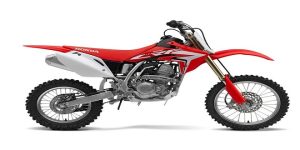As an Amazon Associate, I earn from qualifying purchases.
Buying a used motorcycle can be a great way to save money while still getting a reliable and enjoyable ride. However, ensuring that you’re purchasing a quality used motorcycle requires careful inspection and evaluation. Here’s a comprehensive guide to help you determine if a used motorcycle is in good condition.
Visual Inspection
A thorough visual inspection is the first step in assessing a used motorcycle’s condition. Pay attention to the overall appearance and look for any signs of damage or excessive wear.
Frame and Body
Examine the motorcycle’s frame and body for any signs of damage, rust, or corrosion. Check for any dents, scratches, or mismatched paint, which could indicate previous accidents or poor maintenance. A straight and undamaged frame is crucial for the bike’s structural integrity and safety.
Tires and Wheels
Inspect the tires for tread depth, uneven wear, and any cracks or bulges. Tires in poor condition can be dangerous and will need to be replaced. Check the wheels for any bends, cracks, or damage. Spin the wheels to ensure they rotate smoothly and are properly aligned.
Lights and Indicators
Ensure that all lights, including the headlights, taillights, and turn signals, are functioning correctly. Check the condition of the lenses for any cracks or discoloration. Properly functioning lights are essential for safety and legal compliance.
Mechanical Inspection
Beyond the visual inspection, it’s important to assess the motorcycle’s mechanical components. This will give you a better understanding of its overall health and performance.
Engine
Start the engine and listen for any unusual noises, such as knocking or ticking, which could indicate internal damage. A quality used motorcycle should start easily and idle smoothly. Check for any signs of oil leaks around the engine and inspect the oil level and condition. Clean, clear oil indicates good maintenance, while dark, dirty oil may suggest neglect.
Transmission and Clutch
Test the transmission by shifting through all the gears. The shifts should be smooth and precise without any grinding or difficulty. Check the clutch for proper operation; it should engage and disengage smoothly without slipping or sticking.
Brakes
Inspect the brake pads, discs, and fluid levels. The brake pads should have sufficient thickness and the discs should be free from deep grooves or warping. Test the brakes by applying them to ensure they provide adequate stopping power without any noise or vibration.
Suspension and Steering
The suspension and steering components are critical for a comfortable and safe ride. Properly functioning suspension and steering ensure stability and handling.
Forks and Shocks
Check the front forks and rear shocks for any signs of leaks or damage. Push down on the suspension to test its responsiveness; it should compress and rebound smoothly without any noises or resistance. Worn or damaged suspension components can affect the motorcycle’s handling and comfort.
Steering
Turn the handlebars from side to side to check for smoothness and any unusual noises. The steering should be free from any binding or stiffness. Ensure there is no excessive play in the handlebars, which could indicate worn steering head bearings.
Electrical System
A reliable electrical system is essential for the motorcycle’s operation and safety. Ensure that all electrical components are functioning correctly.
Battery
Check the battery terminals for corrosion and ensure the connections are secure. If possible, use a multimeter to check the battery’s voltage. A healthy battery should have a voltage of around 12.6 volts when fully charged.
Wiring
Inspect the wiring harness for any signs of wear, damage, or modifications. Look for any exposed or frayed wires, which could cause electrical issues or failures. Properly maintained wiring ensures reliable operation of the motorcycle’s electrical system.
Service History and Documentation
A well-documented service history can provide valuable insights into the motorcycle’s maintenance and care. Ask the seller for any service records or receipts.
Maintenance Records
Review the maintenance records to ensure that the motorcycle has been regularly serviced according to the manufacturer’s recommendations. Regular oil changes, filter replacements, and other routine maintenance are indicators of a well-maintained bike.
Vehicle History Report
Obtain a vehicle history report to check for any reported accidents, title issues, or previous ownership details. A clean history report can provide peace of mind and help you avoid potential problems.
Test Ride
Finally, take the motorcycle for a test ride to assess its performance and comfort. Pay attention to how it handles, accelerates, and brakes.
Handling and Comfort
The motorcycle should feel stable and comfortable to ride. Test it at different speeds and on various road conditions to get a sense of its overall performance. Any unusual vibrations, noises, or handling issues should be noted and addressed.
Performance
Evaluate the engine’s power and responsiveness. The motorcycle should accelerate smoothly and without hesitation. Test the brakes and suspension to ensure they provide adequate control and comfort.
Conclusion
Determining if a used motorcycle is in good condition involves a combination of visual inspection, mechanical assessment, and a test ride. By thoroughly evaluating the motorcycle’s frame, engine, transmission, brakes, suspension, and electrical system, you can ensure you’re purchasing a quality used motorcycle. Additionally, reviewing the service history and taking the bike for a test ride will help you make an informed decision. By following these steps, you can confidently choose a reliable motorcycle that will provide many years of enjoyable riding.

Leave a Reply